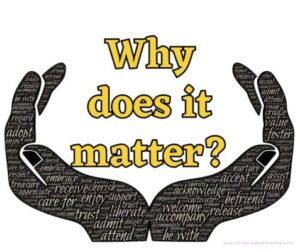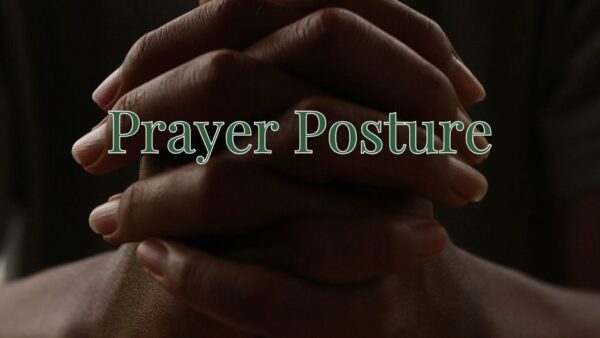Are you familiar with the Big 4 Questions that every story, report, or event needs?
Every story needs WHO. Who is involved? Who is the intended audience?
Every story needs WHAT. What is going on? What is the intended outcome?
Every story needs WHERE. Where is it located? Where is it headed?
Every story needs WHEN. When did it happen? When is the next part scheduled?
Those Big 4 are the basic building blocks in telling a story or reporting or publicizing an event.
When we want people to do something, there is an added question that is needed: HOW
How do I do this? How do I proceed to the next step?
With those basic building blocks, we can accomplish a lot.
But we may be neglecting the “secret sauce” question—perhaps the most important one: WHY?
Why does it matter? Why should I care?
For the past seven weeks, I’ve been writing about the art of healthy conversation (previous posts: 1, 2, 3, 4, 5, 6, and 7). This is the eighth—and final—post in this series.
I won’t go back and review all that has come in the previous seven posts; rather, let me approach this through the lens of these six questions.
WHO is the intended audience? Obviously those who read my posts either in the newspaper, on my blog, or in an email to my subscriber list. However, the WHO is really anyone who is interested in engaging in the kinds of conversations that build better communities.
WHAT are the intended outcomes? That we would learn to talk WITH—not simply AT or OVER—one another in a way that we become allies instead of adversaries, collaborators instead of competitors, learners instead of labelers. (Maybe I should say advocates instead of alliterate-ers … oops).
WHERE is this located? Specifically, in the context of wherever we work, live, and play. Where is it headed? Figuratively, to a place of better and more empathetic understanding.
WHEN should this happen? Honestly, we need to start right now. Today. It will take some time to unlearn some bad habits and develop some new ones, but I’m reminded of the wise statement that ‘the best time to plant an oak tree was 50 years ago. The second best time is today.‘ Some of us need to start planting some trees of collaboration and cooperation whose shade we will never personally enjoy.
HOW will we do this? The previous seven posts have offered some suggestions on looking at things differently and developing some skills in learning to dialogue with one another. I suggest beginning with, “Let’s talk about this.”
WHY does it matter?
Here’s what I believe to be true about everyone who reads this: None of us wants to live in a community that is in constant turmoil, where the loudest and most obnoxious voices get to control the narrative, where bullies prevail, and where we are treated with contempt if we question the status quo.
Here’s what I know about us: We rarely see ourselves as the oppressors or bullies. We almost always see ourselves as the victims of those things.
Sometimes we are not seeing clearly.
I think Jesus gives us some help with this:
“In everything, therefore, treat people the same way you want them to treat you, for this is the Law and the Prophets” (Matthew 7:12).
Jesus says to a Jewish audience that everything taught about human interaction by their most important religious writings can be summed up in “treat other people the way you want to be treated.”
Almost every religion and worldview has some variation of this ethic. And we have all failed miserably.
Wouldn’t it be amazing if we could change that?




